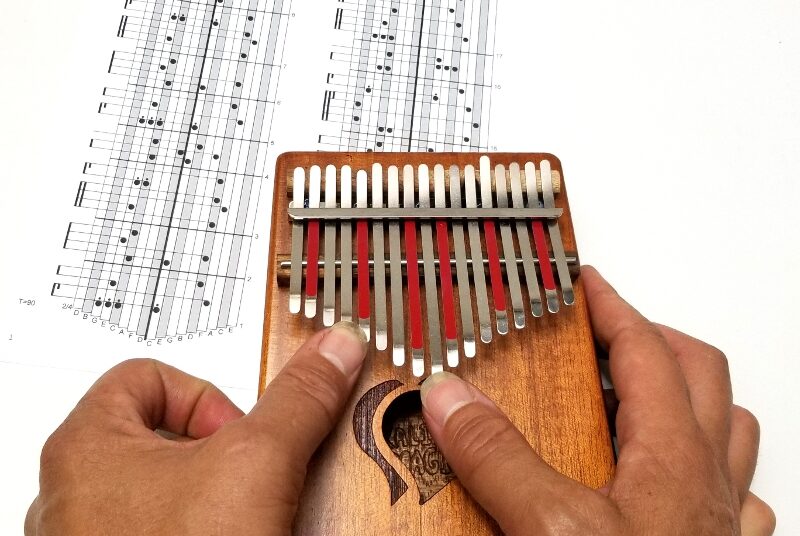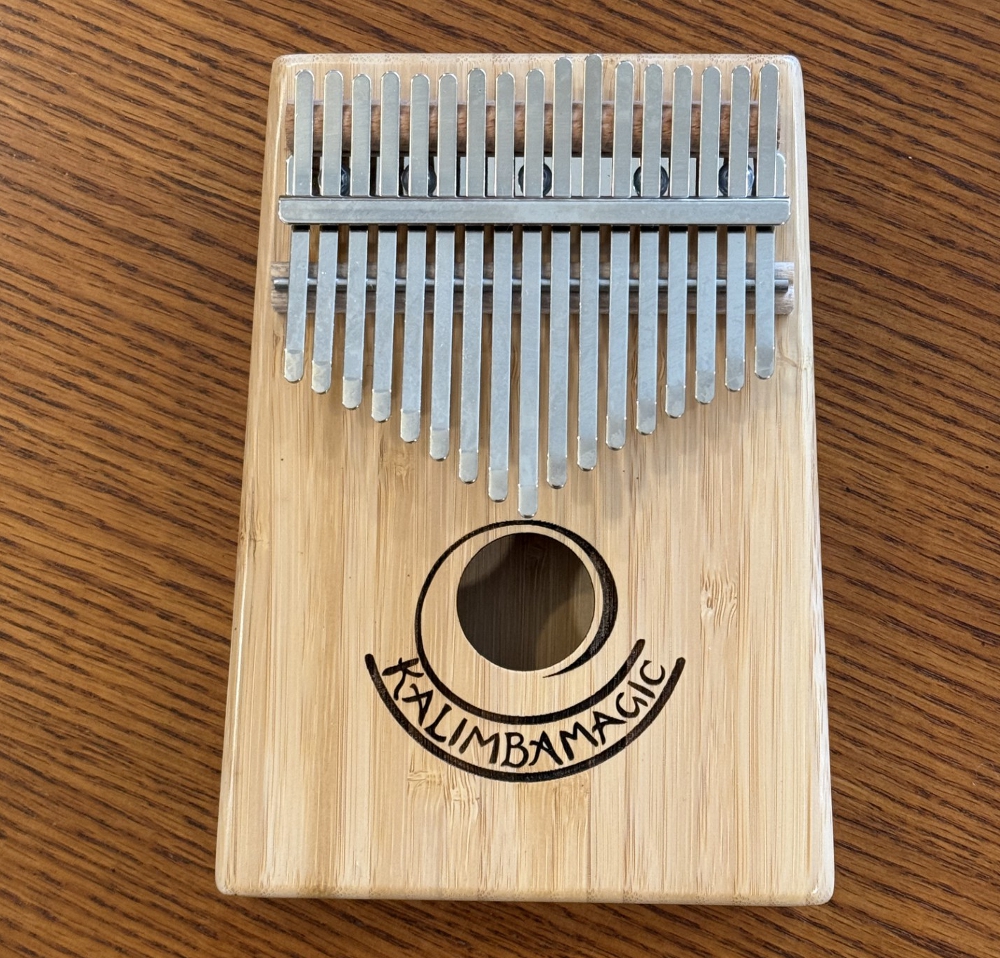
Use of this website constitutes acceptance of the Privacy Policy and User Agreement. Copyright © 2020 Kalimba Magic. All Rights Reserved.
I find the addition of the right index finger to the two thumbs to be essential to playing African music, and in expanding the capabilities of kalimbas in general. However, it typically feels unnatural at first, no matter which approach you take. A great many people resist using their (non-thumb) fingers on these instruments.
If you just don’t want to (or cannot) use a forefinger, what are you to do?
It’s not just beginners who feel awkward twisting their right index fingers to pluck up or down. Chiwoniso Maraire herself often used just the two thumbs. I have been playing the African karimba for 11 years, and in those clutch moments in a performance or a rehearsal, where I feel I have to bear down with power and punch the notes out, I get that power from my thumbs, and not from my index finger. In those moments, I revert to the simple, old two-thumb style.
And why, again, does someone want to use their right index finger in addition to their two thumbs? Playing with the right forefinger adds potential complexity to your music, and can add subtlety to your playing. It often informs the types of melodies and counter-melodies available to you. It sometimes seems as if the right index finger adds its own consciousness to the music. So, don’t stay away from using the right index finger forever
On the karimba, the main use of the right forefinger is to play the upper right tines, especially when you double them with the lower right tines, which are tuned an octave apart from each other. You can easily reach those upper tines with your right thumb. Your right thumb can then slide off the upper tine and down onto the lower row tine (slide off to the left if you own a 17-note karimba, slide off to the right if you own a 15-note mbira nyunga nyunga).
Using this slide-off technique, you can reproduce a key part of the functionality of the right index finger – those right octave pairs. Single notes played with the right index finger can be replaced by playing with the right thumb, though you will need to play faster if you do it all with just the thumb.


Sign up for our newsletter and free resources with your email address:
We pinky promise not to spam you and to only send good stuff.
 Seek to Infuse Your Musical Moments With Beauty and Magic
Seek to Infuse Your Musical Moments With Beauty and Magic Kalimba Magic – We Give You The Tools You Need to Succeed
Kalimba Magic – We Give You The Tools You Need to Succeed Back in Stock! The Bamboo-17 Kalimba
Back in Stock! The Bamboo-17 KalimbaUse of this website constitutes acceptance of the Privacy Policy and User Agreement. Copyright © 2020 Kalimba Magic. All Rights Reserved.
Notifications